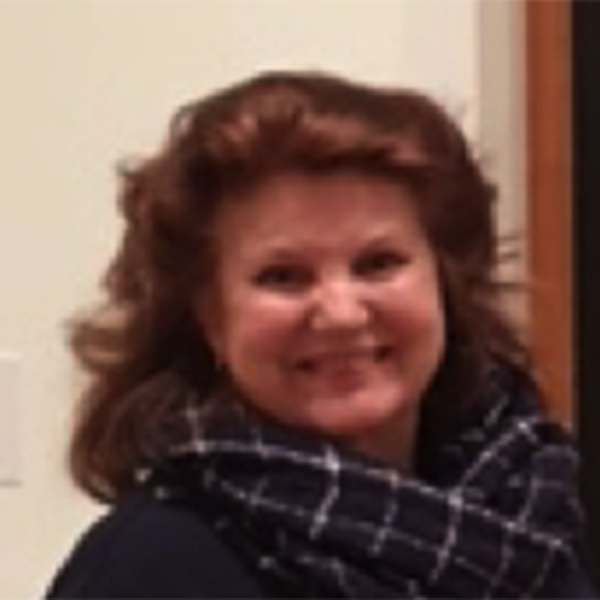
Art Education and Data Visualization
-
Register
- Non-member - $49
- Member - Free!

Art Education and Data Visualization
Tuesday, July 11, 2017 | 7-8 pm ET
FREE for NAEA Members; $49 for non-members
The need for compelling data visualizations is increasing—especially in the field of visual arts education. In this webinar, learn how to combine digital tools and artistic methods to create diverse data visualizations that are both practical and aesthetically pleasing. Join us as we explore the ins and outs of data visualization through the approaches of four art educators.
Learn from Sheri Klein as she discusses artistic methods, such as painting and drawing, for data visualization that supports embodied research methods and empathic listening to research data, and gives examples from her personal work.
Investigate Form+Theme+Context (FTC)™ and Marking & Mapping™ as Renee Sandell shares visualization methods that help learners decode and encode meaning by exploring, orienting, charting, and “owning” visual and other knowledge.
Discover how Read Diket uses interdisciplinary theory and knowledge of field practice to represent statistical findings as images.
See Pamelia Valentine’s data visualization created from actual classroom experiments and later shared with students and parents.

Sheri R. Klein, PhD, MFA
Artist, Educator & Researcher
Sheri R. Klein, PhD, MFA is an artist, educator and researcher. She has taught and mentored undergraduate and graduate art education students for over two decades. She was a Full Professor of Art Education and Program Director at the University of Wisconsin-Stout (US) and has been a visiting scholar and lecturer at numerous universities and art schools. Her scholarship has focused on aesthetics, curriculum and pedagogy, visual reflective practices, visual art, and data visualization. Her publications include over 50 peer-reviewed articles and book chapters in art education, education, and leadership journals and books. Her books, Teaching Art in Context: Case Studies for Preservice Art Education (2003, NAEA) and Action Research: Plain and Simple (2012, Palgrave MacMillan) are widely used within education and art education courses. Her current visual inquiry explores contemplative and reflective practices using visual journaling, collage, drawings, paintings, and fabric design. Dr. Klein is the recipient of numerous teaching and research awards and is a Distinguished Fellow of the National Art Education Association.

Renee Sandell, PhD
Program Director, SummerVision DC & Former Professor of Art Education
Dr. Renee Sandell is Program Director of SummerVision DC, which she created, initiated, designed, and has delivered for NAEA since 2010. Previously Professor of Art Education at George Mason University (2004-2014) and Maryland Institute College of Art (1990-2003), Sandell holds a Ph.D. and M.A. in Art Education from The Ohio State University. Co-author of two books on gender issues, Sandell has published numerous articles, book chapters and art curricula. Recognized as 2015-2016 Distinguished Lecturer in Art Education and 2013 NAEA National Art Educator, Renee has received numerous awards for her leadership and scholarship on her Form+Theme+Context (FTC)™ methodology as a balanced way of seeing that uses FTC Palettes to deepen meaningful engagement in decoding as well as encoding art. Sandell uses her Marking & Mapping™ in hands-on, data visualization workshops designed to nurture creativity and insight for individuals within professional development programs, health spas, businesses, and other venues.

Read Montgomery Diket, PhD
Art Department Chair
Read Montgomery Diket, Ph.D. University of Georgia, Gillespie Endowed Chair for research at William Carey University, chairs the art department. Dr. Diket has received national grants, served on editorial boards, reviewed and presented nationally and internationally, and published widely in the arts, assessment, and education. Her research centers on artistic learning and leadership informed by neuroscience and critical theory. She uses mixed methods design to communicate with broad audiences about theoretical, practice based, and policy oriented interpretations based on statistical analysis of NAEP data and survey data.
Dr. Diket received the de Jong Award for service in 2016, the National Art Education Association Higher Educator of the Year (2003) and the Barkan award (2003) for best publication in the field. Dr. Diket was selected Distinguished Fellow for the National Art Education Association in 2006 and serves as membership chair. She has held numerous national offices with AERA, NAEA, and NAGC.

Pamelia D. Valentine, NBCT
Teacher Leader, Junior High
Pamelia D. Valentine is a teacher leader in Oakland Bay Junior High and in her district in Shelton, Washington. She’s active in State and National professional organizations and is National Board Certified in Early Adolescent /Young Adult Visual Arts (2006). She currently serves as a Washington State Regional Vice-President and has been on the Washington Arts Education Association Board since 2006. Pamelia is the current NAEA Middle-Level Representative for the Professional Learning Through Research group.
Data drives the decisions that Ms. Valentine makes in the art classroom. From discovering how important it is to use groups and games for learning to providing evidence of student growth as well as showing the necessity of staff to learn to speak Spanish as the numbers of Latino students in our rural community grew from 2% to over 25% in the last decade! Data visualization truly turns a picture into a thousand words!
Upon completion of this NAEA webinar, you may earn 1 hour of professional development credit as designated by NAEA. Once the webinar is completed, you may view/print a Certification of Participation under the "Contents" tab. You may also print a transcript of all webinars attended under the "Dashboard" link in the right sidebar section of the page.
Clock hours provided upon completion of any NAEA professional learning institute are granted for participation in an organized professional learning experience under responsible sponsorship, capable direction and qualified instruction, and can be used toward continuing education credit in most states. It is the responsibility of the participant to verify acceptance by professional governing authorities in their area.
